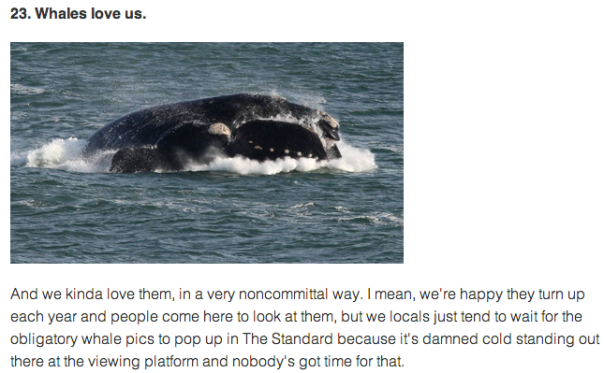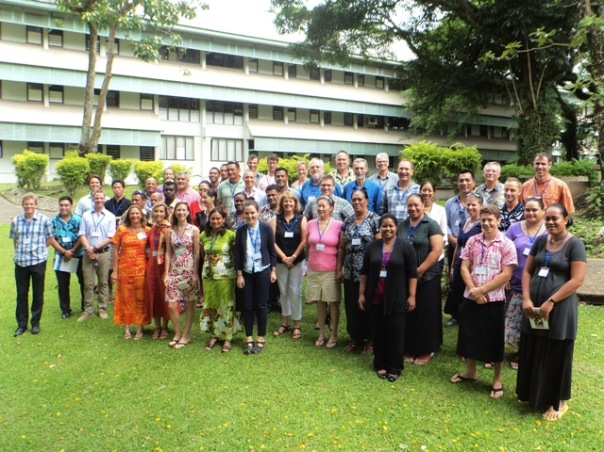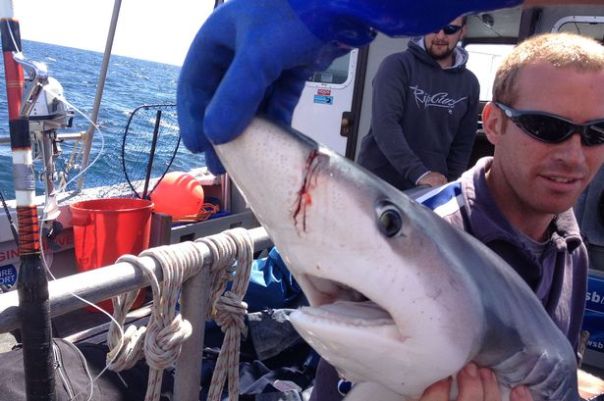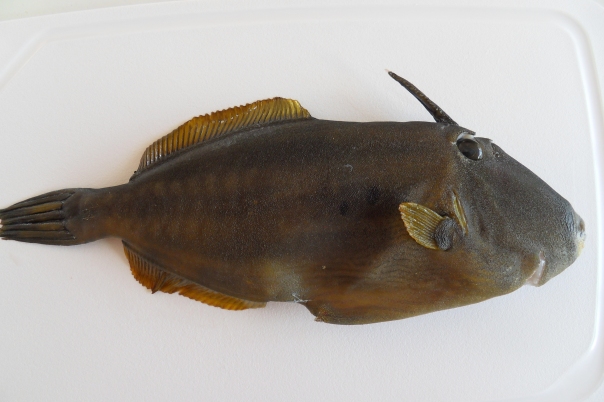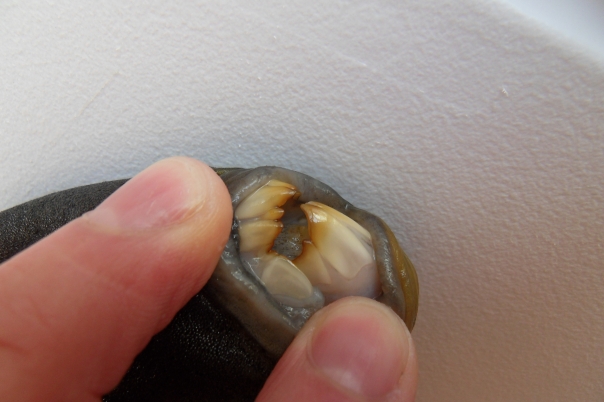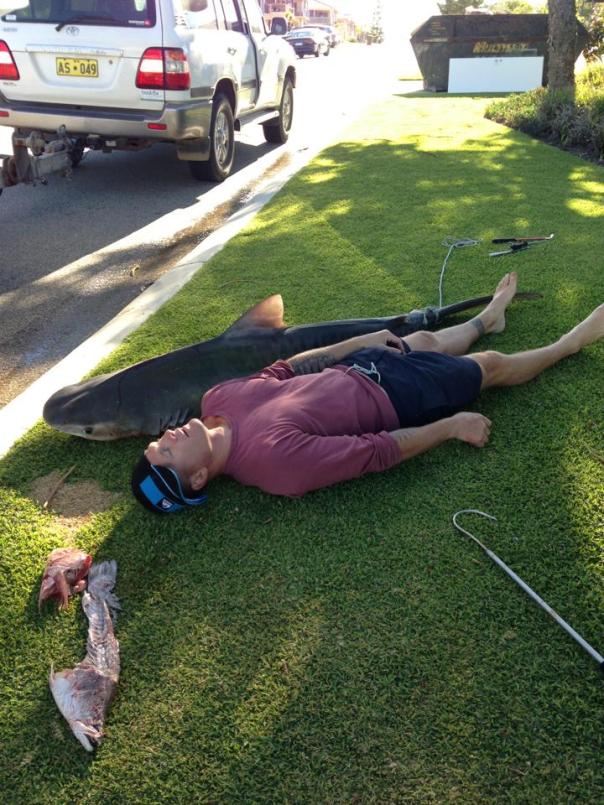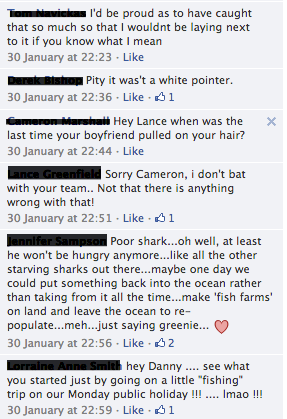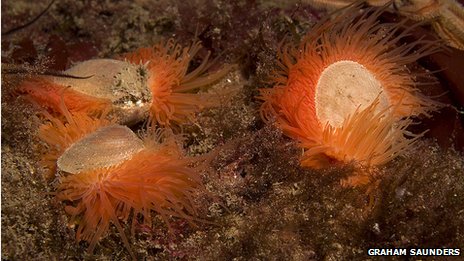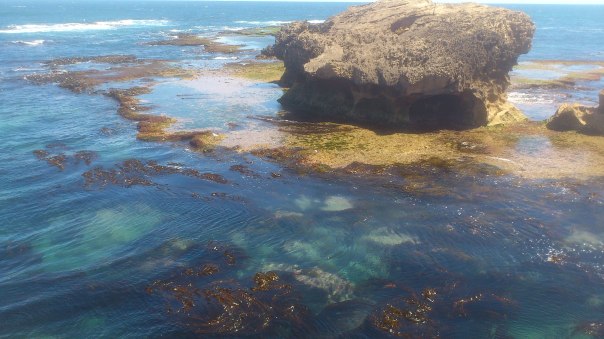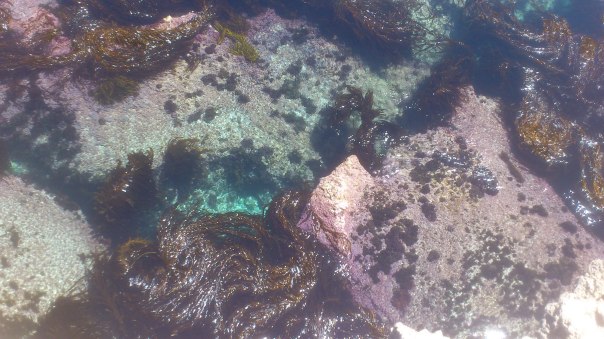Blog Archives
New shellfish reefs to be planted in Victorian bay
Dredging and bottom trawling of Port Phillip Bay in Victoria have destroyed most of the natural shellfish reefs in the 230 years since European settlement of Australia.
This new plan reported in the Age newspaper last week will help to restore shellfish reefs in the bay with the aim of increasing habitat for flathead, snapper and other commercially and recreationally valuable fish.
Shellfish reefs will be re-created on the bottom of Port Phillip Bay in a historic project that aims to improve marine habitats in Victoria’s largest bay.
Researchers say that if the reefs can be successfully established as expected, they would provide healthy habitats for shellfish like mussels and oysters. They would also provide habitat, shelter and food options for fish such as snapper, flathead, rockling and many other fish that live in the bay. They would also help improve water quality.
Shells from mussels, scallops and oysters that have been discarded by the seafood industry and restaurants could be sought as part of the project. They would eventually be placed in the bay at one of three locations, in order to form a base for the early stage of the shellfish reefs. Some artificial material could also be used.
But the project requires more than old shells. Millions of baby oysters and mussels, which will be bred at the Victorian Shellfish Hatchery at Queenscliff, will be used to colonise the reefs in the $270,000 pilot project. The baby oysters and mussels will attach themselves to shells at the hatchery, before they are placed in the water on top of the old shells.
The project, to commence this year, is expected to be formally announced on Saturday by Agriculture Minister Peter Walsh, the minister responsible for fisheries. It will be funded jointly, with $120,000 from the state’s Recreational Fishing Initiative, and $150,000 from The Nature Conservancy, an international organisation that undertakes conservation works around the world.
A patchwork of reefs will be restored at three locations, near Geelong, Chelsea and St Kilda, in about eight to 12 metres of water.
Local marine sanctuary loved and ignored in equal measure
This is a great recent video from the Friends of the Merri Marine Sanctuary, a small and dedicated group helping – as one goal – to remind local people about the amazing natural features and marine life on their doorstep.
At a lecture and networking day on the weekend hosted by Deakin University and the Victorian National Parks Association, a member of the Friends group mentioned how hard it can be to get the support and interest of people outside the conservation community. I could see similar parallels with another spectacular occurrence that Warrnambool people often ignore.
Living near one of the calving grounds for southern right and humpback whales, people in this area can tend to be ambivalent about the excitement generated in the tourism industry each time the whale watching season approaches.
A recent humorous list of 30 things only a local would understand had this gem at number 23:
Funny (maybe just as a Warrnambool local) but it highlights that disinterest I spoke of – we’re happy the whales are here but we’re just as happy to ignore them because it doesn’t suit us to stand around for hours (and it can be hours between ‘showings’). Same goes for conservation – local people are generally happy that someone is doing it but not bothered to get involved themselves.
What can you do with apathy like that? It was an open question to the weekend’s session and though there were some good suggestions, as usual it was hard to come up with the perfect answer. My idea was to keep the good work these people do at the forefront, tell the media, tell politicians, help to get relevant policy change at the state and federal level and let your own passion inspire other people. Al Gore was one who helped ‘cure’ apathy over climate change on a global level but it’s even more important to make small communities like ours care about the natural wonders they take for granted.
Why sea cucumbers aren’t just another ‘delicacy’ for Asian buffets
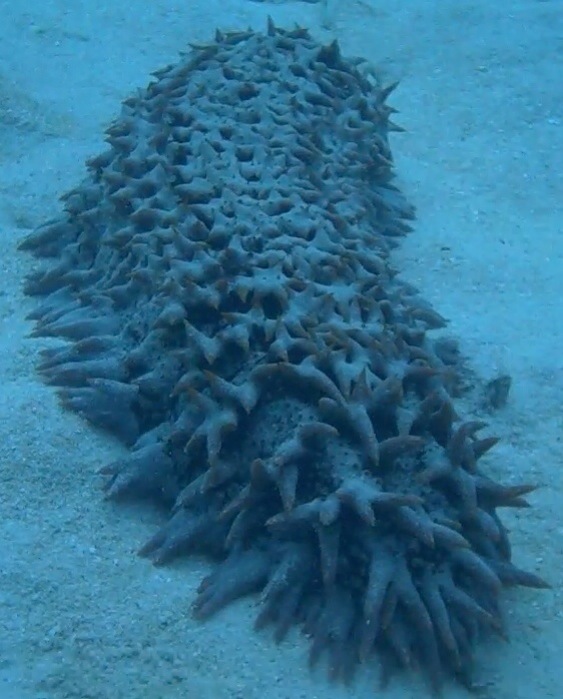
Prickly redfish, a type of sea cucumber. This one was near Opal Reef, part of the Great Barrier Reef an hour from Port Douglas.
io9 is generally a scifi website, full of short monologues on the current state of scifi cinema, but occasionally they run very good articles on real science. Like the one below on the issues with sea cucumber harvesting:
Sea cucumbers are in trouble. Everyone knows about the problems that elephants and rhinos face due to poaching, that dolphins face due to drive hunts, and that sharks face when overzealous governments try to convince their constituents that they’re helping them avoid shark attacks. Sea cucumbers may not be as charismatic as their megafaunal counterparts, but they actually provide an important service for reef ecosystems.
They help to keep the sand in reef lagoons and seagrass beds fresh by turning them over, and by feeding on the dead organic matter that’s mixed in with the sand, the nutrients they excrete can re-enter the biological web by algae and coral. Without the sea cucumbers, that sort of nutrient recycling could not occur. It’s also thought that sea cucumbers help to protect reefs from damage due to ocean acidification. Feeding on reef sand appears to increase the alkalinity of the surrounding seawater.
The problem, according to a study conducted by Steven Purcell and Beth Polidoro, is that sea cucumbers are considered a luxury snack. As they explain at The Conversation, dried-out versions of the tropical species retail between $10 and $600 per kilogram in Hong Kong and on mainland China.
There’s actually one species that is sold for $3000 per kilo, dried. Sea cucumbers are thought of as “culinary delicacies,” and often adorn the buffets of festival meals and are served at formal dinners.
There are 377 known species of sea cucumber. Percill and Polidoro’s study shows that the more prized a species is as a delicacy, the more likely the IUCN is to categorize it as vulnerable or threatened – at least for the species they investigated. It’s plain to see that the more expensive the critters are, the more likely they are to be plotted with orange or red dots.
It’s not just a correlation. In most cases, it’s the rarity of a species that drives up the value, leading to exploitation and eventually, extinction. It’s basic supply/demand economics. But the researchers say that for the sea cucumbers they looked at, the causal relationship is reversed. “High-value drives rarity in sea cucumbers, not vice versa,” they write. “None of the naturally rare species are particularly high value.”
Is there anything that can be done to protect these awkward, squishy creatures? “Species-specific bans have been placed on threatened sea cucumbers in a few instances,” the researchers note, “but these regulations do not prevent serial depletion of other species further down the value chain.” Instead, they recommend that a short list of allowable species be created, sort of like Monterey Bay Aquarium’s sustainable seafood card, but for cucumbers. It would exclude threatened species and those most critical for providing ecosystem services to reefs. If sea cucumber fishing can be controlled, the rarer species just might have a fighting chance to survive.
Marine Spatial Planning – one of the daily session summaries
I was asked by a few people at the Marine Spatial Planning workshop in Suva over the past week to post a few updates on my blog (the original articles I wrote appear on the Secretariat of the Pacific Regional Environment Program website)
What is Marine Spatial Planning, you might ask? Many attendees did this week and among many complex definitions I heard this was the easiest to comprehend: “It is the process of analysing and making recommendations on the distribution of human activities affecting coastal and marine areas. A key goal is to balance ecological, economic, social and cultural objectives.”
26 November 2013, Steve Pogonowski, Marine Spatial Planning, Suva Fiji – Marine spatial planning will become ever more vital as the Pacific islands and territories deal with the impacts of rising sea levels, ocean acidification and ocean warming, attendees at a workshop at the University of the South Pacific in Suva, Fiji, heard yesterday.
The second day of the Marine Spatial Planning workshop looked at climate change and other challenges to central and west Pacific countries and territories, case studies of marine spatial planning across the region and new projects being brought in to assist cross-boundary planning.
Attendees on the second day represented organisations in countries and territories including Wallis and Futuna, Solomon Islands, Tuvalu, French Polynesia, Micronesia and Samoa.
Sangeeta Mangubhai, Senior Programme Officer for IUCN Oceania Regional Office, said she hoped participants would all gain a greater understanding of initiating and carrying out good marine spatial planning.
“One of the things I really liked was listening to the case studies and also hearing some of the regional efforts being made to support countries if they decide to implement marine spatial planning from coastal waters out to their EEZ (Exclusive Economic Zone),” she said.
“Especially for our Pacific Island participants – and there are some here representing their governments – I hope they can gain a real understanding of marine spatial planning is and the role it can play in managing the valuable resources in their countries to achieve the ecological, social and economic outcomes that they want.
“If they undergo a marine spatial planning process, they now realise there are experts and experiences in this region that they can tap into to get support and assistance.”
Discussion topics included the success of Locally Managed Marine Areas in involving communities in conservation; how data collection on tuna fishing can track the effects of climate change; and the importance of local socioeconomic, governance and ecological issues in cross-boundary planning.
François Gauthiez from the French Marine Protected Areas Agency (AAMP) said the workshop had also generated interesting discussions on various software tools and how they can be used to present data simply to help island communities develop their fishing and conservation plans for the future.
Blue shark attacked by Jaws! Ok, not Jaws but still…
Another one from the “Overhyped Shark Attack” Files, this one is a little more unusual than the common ‘Jaws bites man/woman/pet pitbull’ stories.
Bastion of truth and journalistic excellence*, UK’s Daily Mirror had this report on a blue shark caught by fishermen off Cornwall with reasonably small bite marks sustained by a “10 foot” shark of some description…
Supposed experts are said to be looking into the attack, which happened when one of the fishos hooked a 60lb blue shark and then watched a larger shark – thought to be a great white – takes bites out of the blue before they could pull their catch onboard.
The reporter makes the surprising mention that “Although it usually eats other sea creatures, it attacks between five and 10 humans a year around the world and has killed 29 since 1990.”
Many gossip rags don’t usually admit that white sharks are ravenous for human flesh, so this is a big admission for a tabloid.
More from the fisherman who snagged it:
“The blue shark looked like someone had taken a machete to it.
“There’s nothing round here that can do that sort of damage. I sent the pictures to a shark expert and he believes it could well be a great white.”
Well, that’s sorted then: if an ‘expert’ says so, great white it is! But probably not. Great whites can roam vast distances and aspects such as climate change-affected ocean currents or shortage of food (i.e. seals, not people) may have encouraged one closer to the UK southern coast.
Without more confirmed sightings and review by real experts, we’ll have to wave this off as a poorly-identified mako attacking a small bluey and leave it at that.
*For those not aware of sarcasm, this is a relatively straightforward example. The Mirror sits slightly above other UK papers The Sun and the defunct News of the World for integrity and believability.
It’s leatherjacket season! Also, this is not a fashion article…
Leatherjackets are amazing fish, in such colourful varieties. In the past two months, I’ve spotted five different species from the Horseshoe to the Yellowfin species (Meuschenia trachylepis) pictured. This species is often seen with the Six-spined leatherjacket, which I mistook this fish for in my original post on Facebook.
Some people have the idea that marine biologists shouldn’t be out fishing for the species we are studying but it can be a great way of identifying fish, learning where they are and aren’t present and the warning signs when stocks start dwindling.
Spearfishing is now one of my favourites sports – it’s low-impact on the marine environment as opposed to other fishing forms, as we target specific fish and only go for the type and size we want.
Obviously some people still abuse catch and size limits as in any form but the crew I dive with all play by the rules (we’re all marine biology undergrads and my partner also works for the government department dealing with fisheries compliance…)
This species has some serious teeth, used for crushing molluscs and slow-moving sessile animals. Anecdotally, leatherjackets aren’t fast-moving like the local zebrafish or bluethroat wrasse – most of the leatherys I’ve seen tend to hide under ledges or in crevices rather than try to outswim their prey.
AMCS puts shark finning back in the news; Danny Green’s shark tale
The Australian Marine Conservation Society is one of Australia’s driving forces in getting Federal Government backing for marine protected areas and their shark finning campaign hit the news again prior to Chinese New Year.
The Daily Telegraph reported last week that not only did the Australian Government (which bans shark finning in our waters) not keep track of shark fin imports but the limited focus on the trade may mean that illegal shark catches and finning is still continuing in Australian territorial waters.
The Australian Marine Conservation Society said it had sourced data from Hong Kong, the capital of the world’s shark fin export trade, and discovered Australia imported 54 tonnes of shark fin between 1998 and 2011.
“The 54 tonnes of fin imported from Hong Kong would be about 4000 tonnes of shark. Even conservative estimates would put this in the order of tens of thousands of individual sharks,” AMCS spokeswoman Jacki Boyce said.
The AMCS said until the beginning of 2012 shark fins imported into Australia were lumped together with other “shark products” under Australian import identification rules.
My previous post on shark attacks mentioned the poor reputation of sharks – spurred on by media misreporting and poorly-researched Hollywood 3D horror films – that is continuing to make it harder for shark conservationists to be heard by the general public.
That doesn’t mean scientists and respected conservationists aren’t trying: David Shiffman and his colleagues over at Southern Fried Science do consistently great work on exposing and debunking shark myths, such as in this recent post.
Even world boxing champion Danny Green was caught up in a recent furore over Facebook photos of the tiger shark he caught near Perth, Western Australia.
The comments on the photos ranged from viewers outraged by the killing of a shark (one described himself as a humanitarian, which I agree didn’t make sense in this context) to the usual “Good on ya for killing Jaws” and plenty of mud slinging – a screen grab of one selection is below.
It showed once again that the shark debate is fraught with misinformation about shark attacks; that personal opinion often stands above scientific evidence where sharks are concerned and lastly, that we all need to be doing more to show people what these amazing sea creatures are really all about.
Flame shell beds disovered off Scottish coast
I’ve been meaning to post this for a few weeks but kept getting distracted with job hunting and government study payment interviews and all that exciting stuff.
The BBC reported that a colony of about 100 million flame shells have been discovered off the west coast of Scotland near Skye, as part of a survey of Marine Protected Areas (MPA). The scallop-like animals were an unexpected find in so great a number.
The report describes them as a ‘living reef’, which may have been Marine Scotland’s words, but whether they are directly supporting other species by providing food or refugia isn’t clear. If they are such an asset for fish and general marine life populations, seeding other suitable areas with flame shells could be an obvious long-term method for supporting marine biodiversity.
Still, the message is that MPAs can work to support these types of colonies, which would surely be decimated if bottom trawling and dredging were still legal in this area.
A huge colony of an elusive and brightly coloured shellfish species has been discovered in coastal waters in the west of Scotland.
The extensive bed of at least 100 million flame shells was found during a survey of Loch Alsh, a sea inlet between Skye and the Scottish mainland.
The Scottish environment secretary said it could be the largest grouping of flame shells anywhere in the world.
The colony was uncovered during a survey commissioned by Marine Scotland.
Flame shell facts
- Flame shells build “nests” by binding gravel and shells together with thin wiry threads.
- About 4cm long, they group together in such numbers that the sea bed is covered by a felt-like organic reef of material several centimetres thick.
- Flame shell beds are found at only eight sites in Scottish waters.
It was conducted as part of work to identify new Marine Protected Areas (MPAs).
The small, scallop-like species has numerous neon orange tentacles that emerge between the creatures’ two shells.
Flame shells group together on the sea bed and their nests create a living reef that supports hundreds of other species.
The Loch Alsh flame shell reef is much larger than expected, covering an area of 75 hectares.
‘Huge challenge’
Environment Secretary Richard Lochhead described the seas around Scotland as a “hotbed of biodiversity”.
“With Scottish waters covering an area around five-times bigger than our landmass, it’s a huge challenge to try and understand more about our diverse and precious sea life,” he said.
“The flame shell must be considered among the most remarkable species in our waters, with a dazzling array of orange tentacles.
“Many would place such an exotic species in far-flung tropical reefs – not realising they dwell under the waves just off the coast of Skye.”
He added: “This important discovery may be the largest grouping of flame shells anywhere in the world.
“And not only are flame shells beautiful to look at, these enigmatic shellfish form a reef that offers a safe and productive environment for many other species.”
The Loch Alsh survey was carried out by Heriot-Watt University on behalf of Marine Scotland.
Dan Harries, of Heriot-Watt University’s School of Life Sciences, said: “Too often, when we go out to check earlier records of a particular species or habitat we find them damaged, struggling or even gone.
“We are delighted that in this instance we found not just occasional patches but a huge and thriving flame shell community extending right the way along the entrance narrows of Loch Alsh.
“This is a wonderful discovery for all concerned.”
Perfect weather for lobster and abalone fishing – another reason I love south-west Victoria
Over the Christmas/New Years break, crowds of Melbourne, interstate and overseas visitors have been flocking to the small towns along the Great Ocean Road to get some (hopefully) sun, sand and surf and relaxation time. While the sun hasn’t been playing fair that much and surfers will have been disappointed, snorkeling and scuba dive conditions have been very good.
The beauty of this south-western stretch of coast is that, for every beach teeming with day-trippers, there’s always another hidden, empty spot nearby. Sometimes they are less accessible, such as this perfect dive spot close to Warrnambool (and less than 200m away from the remains of the dead whale stranded on the rocks in July), but often they are just further away from the usual tourist traps such as the 12 Apostles, Bay of Martyrs and London Bridge.
If you’re after blacklip (or less commonly, the tastier greenlip) abalone or southern rock lobster, these out-of-the-way spots are well worth checking out. A dive spot just over 400m from a tourist campervan-filled carpark near Port Campbell yielded a feast of abalone on Thursday and scuba divers reported that some of the deeper ledges held some sizeable crays.
Victoria is one of the biggest wild abalone breeding grounds in the Southern Hemisphere and the strict regulations (and heavy fines for breaking the rules) on recreational collecting have helped to maintain healthy stocks in many less-populated areas.
I won’t give away any of the better local spots but if you’re after a fresh local feed, checking out some of the dirt tracks near the coast can bring great rewards.
Nudibranch on the Seaway (again)
Nudibranch are amazing creatures and seeing as the Gold Coast Seaway will soon be the site of a massive amount of dredging for the installation of a new port, it may be harder to see these guys in such clear water there.

